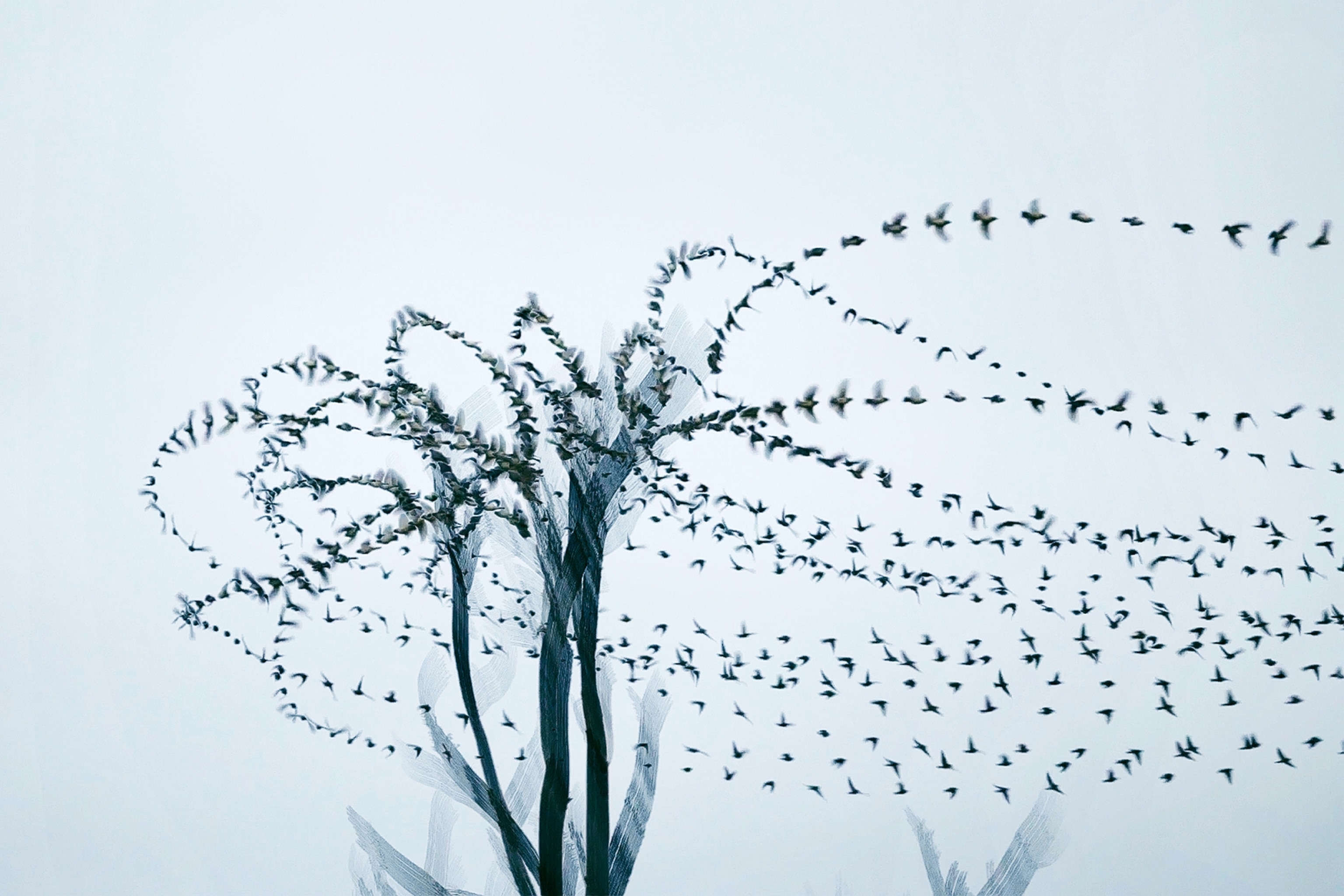
If Birds Left Tracks in the Sky, They’d Look Like This
A photographer captures the paths that birds make across the sky.
If birds left tracks in the sky, what would they look like? For years Barcelona-based photographer Xavi Bou has been fascinated by this question. Just as a sinuous impression appears when a snake slides across sand, he imagined, so must a pattern form in the wake of a flying bird. But of course birds in flight leave no trace—at least none visible to the naked eye. Bou, now 38, spent the past five years trying to capture the elusive contours drawn by birds in motion, or, as he says, “to make visible the invisible.”
First he had to shed the role of mere observer. “Like a naturalist, I used to travel around the world looking at wildlife,” he says. He began exploring photographic techniques that would allow him to express his love of nature and show the beauty of birds in a way not seen before.




THE YEAR OF THE BIRD
In 1918 Congress passed the Migratory Bird Treaty Act to protect birds from wanton killing. To celebrate the centennial, National Geographic is partnering with the National Audubon Society, BirdLife International, and the Cornell Lab of Ornithology to declare 2018 the Year of the Bird. Sign the pledge to find out this month's action and share your actions using #BirdYourWorld to increase your impact.
Ultimately he chose to work with a video camera, from which he extracts high-resolution photographs. After he films the birds in motion, Bou selects a section of the footage and layers the individual frames into one image. He finds the process similar to developing film: He can’t tell in advance what the final result will be. There’s one magical second, he says, when the image—chimerical and surreal—begins to emerge.
Before Bou began this project, which he calls “Ornitografías,” he earned degrees in geology and photography in Barcelona, then worked as a lighting technician in the fashion industry and also co-owned a postproduction studio. This current work, he says, combines his passion and his profession. “It’s technical, challenging, artistic, and natural. It’s the connection between photography and nature that I was looking for.”




















